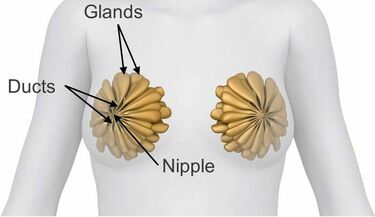Breasts are part of female and male bodies. But there’s quite a difference in size, shape and function of breasts between the sexes.
Learn more about breasts, normal changes in your breasts, breast density and why breast checks are important.
Your breasts are made up of different types of tissue. Each breast has 15 to 20 lobes (glandular tissue). These contain the glands that produce milk, and ducts that take milk to the nipple. Fatty and fibrous tissue around the lobes gives breasts their size and shape. Breasts also have blood vessels, lymph glands and nerves.
Nipples are on the surface of each breast. This is where milk leaves the breast to feed a baby. The darker circular area of skin around the nipple is called the ‘areola’.
It’s normal for one breast to be slightly larger than the other. It’s also normal and common for breasts to be lumpy or have non-cancerous (benign) nodules.

Breast tissue can change during your life. Hormonal changes related to your menstrual cycle, pregnancy and breastfeeding can all change the look and feel of your breasts. For example, your breast tissue may be tender and lumpy just before your period.
As you approach menopause (your final period), lower levels of oestrogen may affect your breast tissue and cause discomfort.
After menopause, the glandular tissue of the breast is largely replaced by fatty tissue, and breasts may feel softer.
The term ‘breast density’ describes the appearance of breast tissue on a breast X-ray (mammogram). Having dense breasts is quite common. Research suggests about 23% of women in Australia have dense breasts.
A mammogram shows how much dense tissue (glandular and connective tissue) you have in relation to fatty tissue. Dense tissue appears white on a mammogram and fatty tissue appears dark.
If you have dense breasts it is harder to detect cancer, as cancer also appears white on a mammogram.
Breast density is a minor risk factor for developing breast cancer.
In some states in Australia (SA and WA), women are told their breast density as part of their breast screen.
If your breasts are reported as dense, you can ask your doctor about further examinations and whether you should have an ultrasound and MRI.
Read more about breast density and screening on the Breast Cancer Network Australia website.
© Jean Hailes Foundation. All rights reserved. This publication may not be reproduced in whole or in part by any means without written permission of the copyright owner. Contact: licensing@jeanhailes.org.au